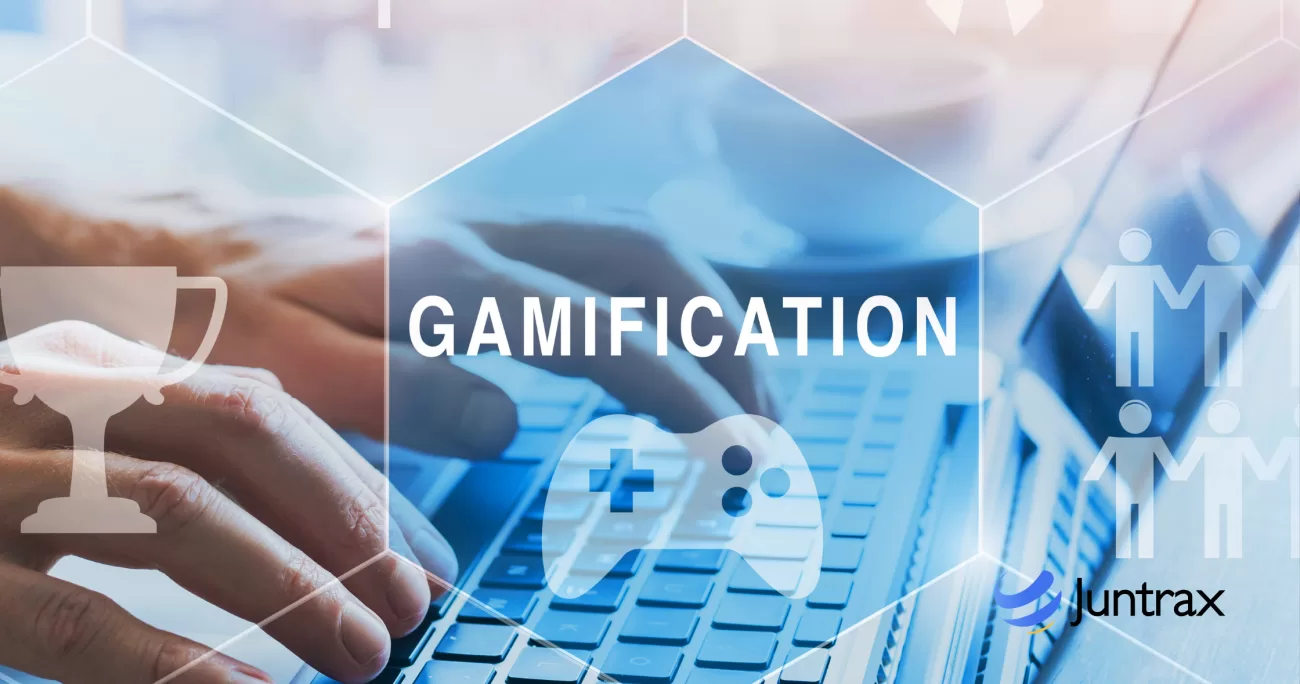Gamification: Meaning, Applications and Benefits

In today’s dynamic work environment, companies are constantly seeking innovative ways to enhance employee productivity, engagement, and motivation. One such transformative approach is the integration of game elements and game mechanics into non-game contexts (gamification), particularly in the workplace. This strategy leverages the psychology behind games to drive behavior, making work not just productive but also enjoyable.
What is Gamification?
Gamification involves applying gamification elements such as points, badges, leaderboards, and challenges to everyday work activities. It’s not about turning the workplace into a game but rather using game mechanics to inspire employees, foster social interaction, and create an environment where work feels rewarding and engaging.
Also Read: Merit Increase: Meaning, Calculation Methods and Importance
The Science Behind Gamification in the Workplace
Why does gamification work? It taps into intrinsic motivations—our natural desires for achievement, recognition, and competition. When properly implemented, it can significantly boost employee performance and satisfaction.
- Reward Systems: Just like in games, employees are motivated by rewards. This could be in the form of bonuses, public recognition, or even simple badges for accomplishments.
- Progress Tracking: Visual indicators like progress bars or milestone trackers help employees see how far they’ve come, boosting their sense of achievement.
- Challenges and Competitions: Healthy competition can drive teams to outperform, fostering a spirit of collaboration and continuous improvement.
Real-World Applications of Gamification
Gamification isn’t just theoretical—it’s actively reshaping corporate cultures globally. Companies like Google, Microsoft, and Salesforce have integrated these strategies to great effect. For example:
- Sales Teams: Leaderboards showcasing top performers encourage healthy competition.
- Training Programs: Interactive modules with quizzes and rewards make learning more engaging.
- Project Management: Tools like Trello or Jira use game mechanics like badges and status updates to keep teams motivated.
Also Read: Virtual Meetings: 9 Tips for Leading an Engaging Meeting
How Gamification Improves Employee Engagement and Productivity
1. Increases Engagement
Employees are more likely to stay engaged when their tasks feel meaningful and fun. Gamification elements make routine tasks feel less monotonous, encouraging employees to invest more effort and creativity.
2. Enhances Motivation
The desire to earn rewards or achieve a higher status can be a powerful motivator. Whether it’s earning points for completing tasks or unlocking new levels of achievement, the competitive edge keeps motivation high.
3. Foster’s Social Interaction
Games are inherently social. Adding social interaction features like team challenges or collaborative goals helps build stronger relationships among employees, improving teamwork and communication.
4. Provides Real-Time Feedback
One of the significant advantages of gamification is the ability to offer real-time feedback. Employees can instantly see the impact of their work, allowing for quick adjustments and continuous learning.
5. Boosts Long-Term Retention and Satisfaction
When employees find their work enjoyable, they’re more likely to stay committed. Gamification helps in improving the experience of work, leading to higher job satisfaction and long-term retention.
Also Read: Best ERP for Medium-Sized Business in 2025
Implementing Effective Gamification Strategies
To ensure effective gamification, consider the following:
- Align with Business Goals: Gamification should support company objectives, not just serve as a distraction.
- Know Your Audience: Tailor gamification elements to fit the interests and preferences of your team.
- Balance Competition and Collaboration: While competition can be motivating, fostering a collaborative spirit ensures a healthy work environment.
- Track Progress and Adapt: Use data to understand what works and make necessary adjustments to your gamification approach.
Also Read: How to Boost Employee Engagement with One-on-One Meetings
Challenges and How to Overcome Them
While gamification offers numerous benefits, it’s not without challenges:
- Over-Reliance on Rewards: Employees may become motivated solely by external rewards, neglecting intrinsic motivation.
- Ineffective Design: Poorly designed gamification can lead to frustration or disengagement.
- One-Size-Fits-All Approach: What works for one team may not work for another. Personalization is key.
Gamification is not just a trend—it’s a transformative strategy that can revolutionize the way we approach work. By embedding game mechanics and gamification elements into daily tasks, companies can create an environment where employees are not only more productive but also more engaged and motivated.
The power of gamification lies in its ability to tap into fundamental human desires—achievement, recognition, social connection, and the thrill of competition. When these elements are thoughtfully integrated, they do more than just boost short-term performance; they cultivate a culture of continuous improvement, collaboration, and personal growth.
However, the key to effective gamification isn’t just about adding points, badges, or leaderboards. It’s about understanding the unique dynamics of your workforce, aligning gamification strategies with business goals, and fostering an environment where employees feel genuinely motivated, not just rewarded.
Also Read: W-9 vs 1099: Key Differences Every Business Must Know in 2025
Conclusion
The benefits of gamification extend beyond just increasing engagement and boosting employee productivity. It contributes to long-term employee retention, enhances team dynamics through social interaction, and supports continuous learning through real-time feedback.
In the rapidly evolving landscape of work, where remote teams and digital collaboration are becoming the norm, gamification offers a powerful tool to bridge gaps, spark innovation, and keep employees connected to their purpose.
So, whether you’re a leader looking to inspire your team, an HR professional aiming to improve workplace culture, or an employee eager to experience work more dynamically, gamification has the potential to unlock new levels of success. It’s not just about the game; it’s about the experience, the growth, and the journey.
Embrace gamification, and you’ll not only see improved employee performance but also witness a more energized, innovative, and fulfilled workforce. The future of work is here—let’s make it a game worth playing.